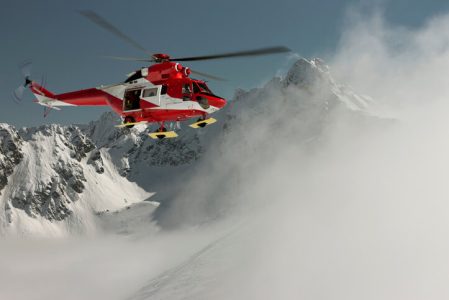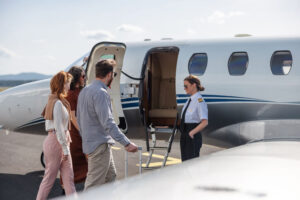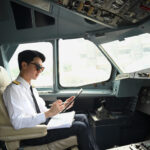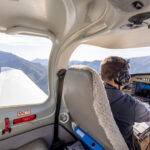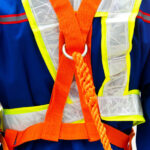Understanding Flat-Light, Whiteout, and Brownout IIMC Conditions
Helicopter pilots operate in some of the most challenging environments imaginable. From mountain ranges to sandy deserts, they often face conditions that can test even the most experienced aviators. Among the most dangerous are flat-light, whiteout, and brownout conditions. Each of these phenomena can drastically affect visibility, making it critical for pilots to understand them and be well-prepared to handle their unique challenges.
Flat-Light Conditions
Flat light occurs when the sun is diffused by overcast skies, creating a lack of shadows and contrast on the ground. This effect is common in snow-covered or icy environments and often referred to as “sector whiteout.” The primary danger is the inability to discern terrain features, which can make it extremely difficult to judge depth perception or distances. For example, while approaching a landing zone, you may misjudge the slope of terrain or proximity to objects, significantly increasing the risk of an accident.
Whiteout Conditions
Whiteout happens in snowy environments when light is reflected in every direction due to a combination of overcast skies and airborne snow particles. This creates a phenomenon where the horizon disappears, rendering a pilot unable to differentiate between the ground and the sky. Whiteout conditions can completely obscure your surroundings, making it nearly impossible to maintain orientation without relying on instruments.
Brownout Conditions
Brownout is a similar visibility hazard, but it occurs in arid or dusty environments. When a helicopter lands or takes off in loose dirt or sand, the rotor downwash can stir up massive clouds of fine particles. These clouds rapidly obscure vision and distort depth perception. The hazards of brownout include losing sight of the landing zone, hidden obstacles, or nearby ground personnel. Brownout conditions are a leading cause of rotorcraft accidents in desert environments.
The Impact of These Conditions on Operations
Each of these conditions creates severe visibility challenges, which in turn can lead to disorientation, loss of situational awareness, and difficulty maintaining safe aircraft control. For instance:
- Loss of spatial orientation: When you lose sight of the horizon or ground cues, you’re at increased risk of veering off course or colliding with obstacles.
- Obstacles and terrain hazards: Reduced visibility means you may not spot power lines, mountainous terrain, or other hazards until it’s too late.
- Group missions at risk: If flying in formation, such as during military or rescue operations, poor visibility can increase the risk of mid-air collisions.
The heightened risks demand not just exceptional piloting skills, but also rigorous preparation and training designed around these specific hazards.
The Importance of Training for Low-Visibility Conditions
Successfully managing flat-light, whiteout, or brownout conditions requires more than just experience—it requires specialized training. Here’s why:
- Instrument reliance: Conditions like whiteout force pilots to rely entirely on their instruments. Training teaches you to trust your dashboard when visual cues fail and to make critical decisions calmly under pressure.
- Emergency procedures: Training can prepare you for worst-case scenarios, such as performing an instrument-only landing or recovering from spatial disorientation.
- Recognition and avoidance: Familiarity with these phenomena helps you recognize when they may occur, so you can plan accordingly or even avoid hazardous conditions altogether.
Recurrent training also sharpens skills specifically for low-visibility settings, ensuring you’re up to date with best practices and confident in your abilities.
Tips for Flying in Flat-Light, Whiteout, and Brownout Conditions
Preparation and mindful execution are key to navigating these dangerous scenarios. Below are some proven strategies and best practices:
- Plan ahead: Always check weather reports and forecasted visibility conditions before heading out. When in doubt, postpone the flight.
- Use reference markers: In flat-light or whiteout conditions, rely on visual references like trees, buildings, or ground markers whenever possible.
- Rely on instruments: Invest time practicing instrument-only navigation to build confidence in your equipment.
- Control your approach: When faced with brownout conditions, approach the landing zone slowly, keeping an escape route in mind.
- Establish a hover: Before touching down in dusty or snowy conditions, hover low and allow loose particles to settle—this can reduce disorientation from downwash.
- Team communication: When possible, use ground personnel or co-pilots to guide you in low visibility. A second set of eyes can be invaluable.
- Recurrent training: Ensure your advanced training includes whiteout and brownout scenarios, so you’re fully prepared in the event they arise during a mission.
Conclusion
Flat-light, whiteout, and brownout conditions are formidable challenges that every pilot must respect and prepare for. The risks are high, but with comprehensive training, thoughtfully executed strategies, and an unwavering focus on safety, you can mitigate these dangers and maintain operational readiness. Remember, the more you practice for adversity, the better equipped you are to handle it when it happens.

